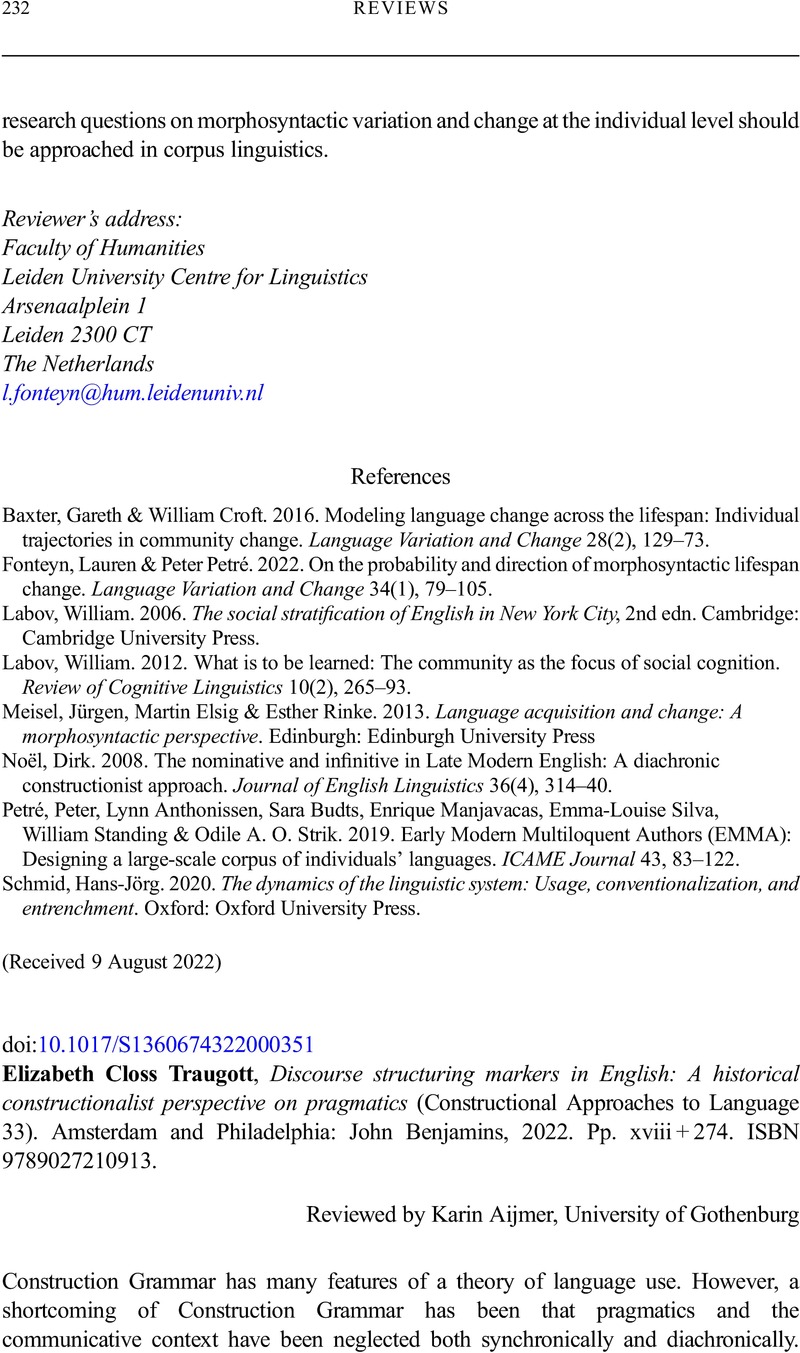No CrossRef data available.
Article contents
Elizabeth Closs Traugott, Discourse structuring markers in English: A historical constructionalist perspective on pragmatics (Constructional Approaches to Language 33). Amsterdam and Philadelphia: John Benjamins, 2022. Pp. xviii + 274. ISBN 9789027210913.
Review products
Elizabeth Closs Traugott, Discourse structuring markers in English: A historical constructionalist perspective on pragmatics (Constructional Approaches to Language 33). Amsterdam and Philadelphia: John Benjamins, 2022. Pp. xviii + 274. ISBN 9789027210913.
Published online by Cambridge University Press: 19 December 2022
Abstract
An abstract is not available for this content so a preview has been provided. Please use the Get access link above for information on how to access this content.

- Type
- Book Review
- Information
- Copyright
- Copyright © The Author(s), 2022. Published by Cambridge University Press
References
Croft, William. 2001. Radical Construction Grammar: Syntactic theory in typological perspective. Oxford: Oxford University Press.CrossRefGoogle Scholar
Goldberg, Adele E. 2006. Constructions at work: The nature of generalization in language. Oxford: Oxford University Press.Google Scholar
Hansen, Maj-Britt M. 2012. The semantics of pragmatic expressions. In Schmid, Hans-Jörg (ed.), Cognitive pragmatics, 589–613. Berlin: De Gruyter Mouton.Google Scholar
Heine, Bernd, Kaltenböck, Gunther, Kuteva, Tania & Long, Haiping. 2021. The rise of discourse markers. Cambridge: Cambridge University Press.CrossRefGoogle Scholar
Langacker, Ronald W. 1987. Foundations of cognitive grammar, vol. 1: Theoretical prerequisites. Stanford, CA: Stanford University Press.Google Scholar
Traugott, Elizabeth C. & Trousdale, Graeme. 2013. Constructionalization and constructional changes. Oxford: Oxford University Press.CrossRefGoogle Scholar



